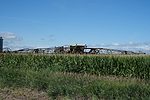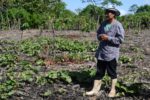News
North Carolina Farmer Leverages Cover Crops to Raise Weed-Free Vegetables
The 28-year-old third-generation farmer uses terminated winter rye grass as a weed deterrent.
Read More
Banking Cover Crop Benefits for Prolonged Soil Health Payoff
Indiana grower Jason Federer says long-standing use of cover crops is helping transition away from chemicals as he counts soil health the ultimate “long-term profit.”
Read More
Farming with Covers is Like ‘Playing Chess’
Minnesota grower Tom Cotter shares how he strategically uses cover crops, as well as tips on seeding varieties and successfully grazing livestock on covers.
Read More










